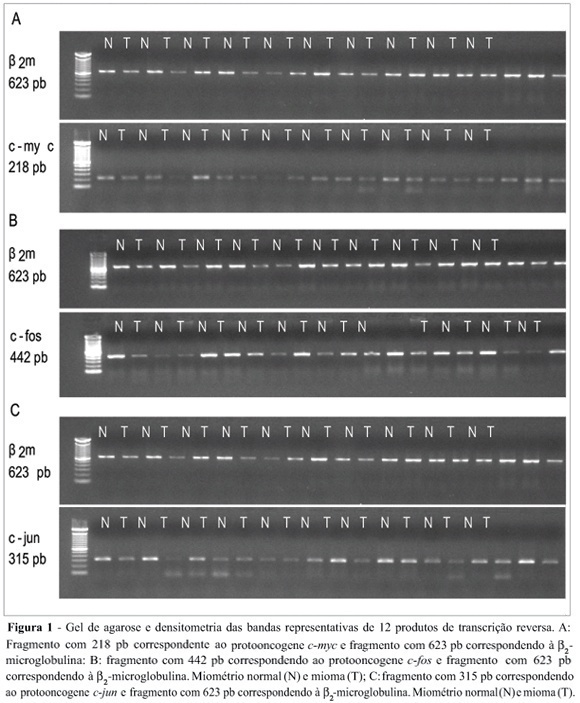You searched for:"Helena von Eye Corleta"
We found (10) results for your search.Summary
Rev Bras Ginecol Obstet. 2006;28(10):590-595
DOI 10.1590/S0100-72032006001000004
Uterine myomas are common benign tumors of the female genital tract. The expression of growth factor signal transduction cascade components including the protooncogenes c-myc, c-fos, and c-jun seem to be involved in the development of myomas. PURPOSE: To compare the gene (mRNA) and protein expression of the protooncogenes c-fos, c-myc, and c-jun in human normal myometrium and leiomyoma. METHOD: A case-control study was performed. Samples were collected from 12 patients submitted to hysterectomy at the Hospital de Clínicas at Porto Alegre. The expression of the specific mRNA for c-myc, c-fos, c-jun, and beta-microglobulin was assessed through the RT-PCR technique, using specific primers to each gene. The protein expression of these protooncogenes was evaluated through the Western blot technique with specific antibodies. RESULTS: No statistically significant difference was observed in the gene expression for these protooncogenes between normal myometrium and leiomyoma (c-myc: 0,87 ± 0,08 vs 0,87 ± 0,08, p = 0,952; c-fos: 1,10 ± 0,17 vs 1,01 ± 0,11, p = 0,21; c-jun: 1,03 ± 0,12 vs 0,96 ± 0,09, p = 0,168, respectively). No statiscally significant difference was observed for the protein expression of these protooncogenes between normal myometrium and leiomyoma (c-myc: 1,36 ± 0,48 vs 1,53 ± 0,29, p = 0,569; c-fos: 8,85 ± 5,5 vs 6,56 ± 4,22, p = 0,434; e c-jun: 6,47 ± 3,04 vs 5,42 ± 2,03, p = 0,266, respectively). CONCLUSION: No difference was observed in the gene expression (transcription) nor in the protein expression (translation) of the protooncogenes c-myc, c-fos, and c-jun between leiomyoma and myometrium.

Summary
Rev Bras Ginecol Obstet. 2022;44(8):797-801
Residency is still considered the gold standard for quality medical training, and acquiring a professional identity as a specialist is one of its central elements. Residents obtain this identity through both the educational environment and direct interaction with peers and supervisors. However, modifications in health care and educational routines during the recent coronavirus disease 2019 (COVID-19) pandemic have significantly impaired these channels. This study is part of a qualitative research project to analyze professional identity formation in a medical residency program in obstetrics and gynecology at a public hospital in southern Brazil. The authors conducted 28 semi-structured interviews with medical residents and preceptors, as well as a focus group with the residents, which was recorded, transcribed, and analyzed in an effort to construct major analytical categories. Restricted movement and physical contact have forced the use of alternative means of interpersonal interaction, such as communication through social media or instant messaging applications. This has also affected educational activities, such as morning rounds, lectures, and seminars. These changes represent a significant impact, especially in Brazil, where physical proximity is an important cultural feature, even in the work and school environments. We speculate that this new type of virtual interaction will also affect the formation of professional identity among obstetrician-gynecologists. These findings suggest that medical residency programs should be attentive to changes in resident training to ensure that the specialist profile and the expected skills, which are consolidated over many years, are not lost.